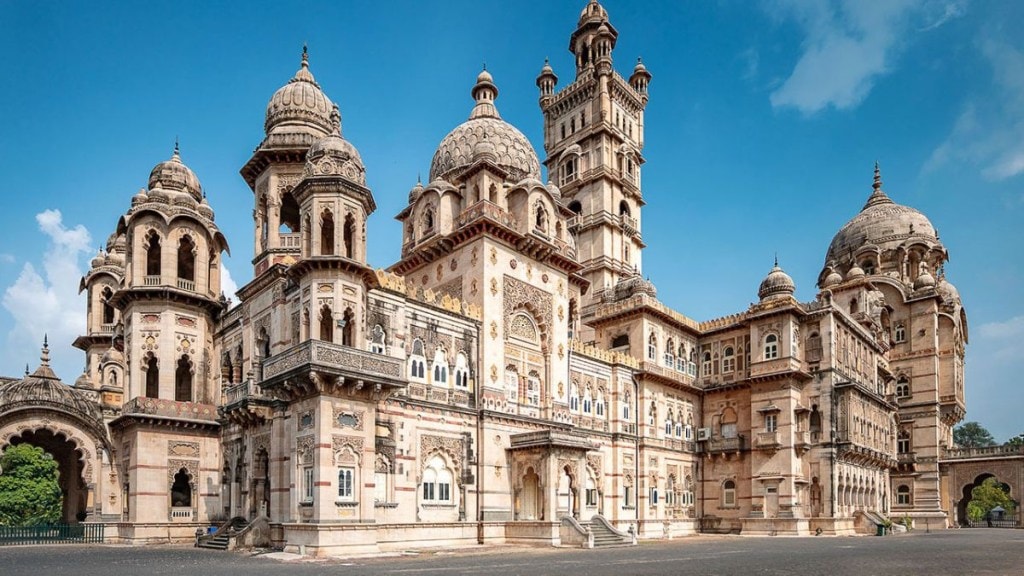India is home to some of the most beautiful and grand private residences in the world. With wealthy entrepreneurs and celebrities hiring the best of what the architectural world has to offer, it is not uncommon to see tasteful and well designed homes that scream money. However, there is a rare league of homes which are a class apart due to their long and storied pasts and they are the homes of the royals of the erstwhile princely states. The grandest among them and certainly the largest private residence in the world is the Lukshmi Vilas Palace in Vadodra, Gujarat which is the seat of the royal Gaekwad family of Baroda.
Private residence is too punitive of a word to describe the grandeur of the Lukshmi Vilas Palace, for it is larger than life and costs a pretty penny. With a worth of Rs 24,000 crores, it dwarfs the Buckingham Palace in England which has a square foot 36 times lesser than it’s own and it is also 10 times larger than Turkey’s White Palace which is the second largest private residence in the world. So, without further ado let us take a tour of the Lukshmi Vilas Palace today and marvel at this architectural wonder.
A brief background of the Gaekwad’s home
The Lukshmi Vilas Palace was commissioned in the year 1878 by Maharaja Sayajirao Gaekwad III and completed in 1890, to showcase the cultural might and prowess of both Baroda and India. According to the Architectural Digest, the 135 year old property is spread out across 30.5 million square feet, which apart from the palace itself, features a professional golf course and an ancient baoli or stepwell dating back to the Mughal times. In an interview to AD, HH Radhikaraje Gaekwad, the Maharani of Baroda said, “The scale of the palace is larger than life. I’ve lived here for 23 years and even now I’m discovering things for the very first time.”
It was designed by British architect Major Charles Mant who had also designed other royal palaces in India such as Bihar, Kolhapur and Darbhanga. The intricate gardens were designed by British landscape architect William Goldring and they still surround the magnificent palace today, complete with a water court and well-maintained flora.
The architectural style of the palace is Indo-Saracenic, which was a revivalist architectural style mostly used by British architects in India towards the latter half of the 19th century. According to author Pradip Kumar Das, The style itself drew inspiration from Indo-Islamic architecture while blending it with layouts similar to that of Gothic revivalist or Neoclassical structures. The Lukshmi Vilas palace was truly designed with a multicultural perspective and inspiration and that attitude reflected neatly from every wall.
An intimate look at the Lukshmi Vilas Palace
Inside, there is an enormous Durball Hall where the king would receive his audience in the days of yore and it is the grandest room in the palace according to AD, designed with both Indian and European influences. Venetian tiles imprinted with rangoli motifs and stained glass imprinted with the likeness o Hindu Gods co-exist side by side. Colourful lacquer on the ceiling feature Islamic designs and wooden balconies line the Durbar hall for women to observe the court. Next to it is a gorgeous Hatti (elephant) hall which is gilded in gold and blue. In the past it was actually used by the king to make a grand entrance on his elephant.
The Gaekwads have opened their home to the public in recent years with annual dance festivals, vintage car shows and craft fairs being hosted by them. In the same interview to AD, Radhikaraje said, ““Lukshmi Vilas Palace is ultimately for the people of India. We are lucky that we get to call it home.” The public can also marvel at the grandeur of the palace inside, as only the private wing is off limits.
The palace itself has a whopping 170 rooms, out of which only a few are occupied by the Gaekwads. The private wing for guests and family features suites, inner balconies and courtyards, lounge rooms, a formal living room and a grand staircase. According to AD, the palace is currently home to His Highness Samarjitsinh Ranjitsinh Gaekwad, the Maharaja of Baroda, his wife, Her Highness Radhikaraje Gaekwad, the Maharani of Baroda, their daughters, princesses Padmajaraje and Narayaniraje, and queen mother, Her Highness Shubhanginiraje Gaekwad, the Rajmata of Baroda.

